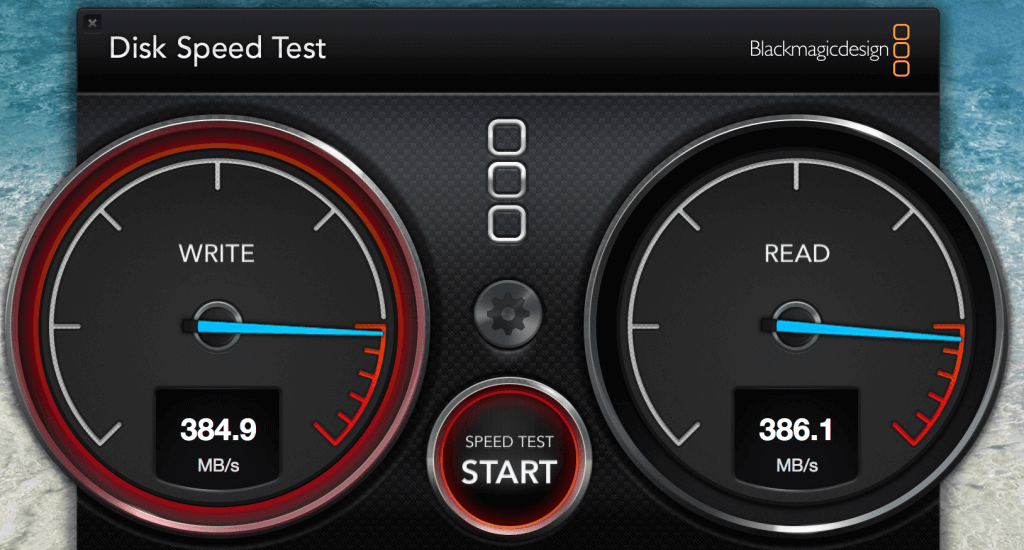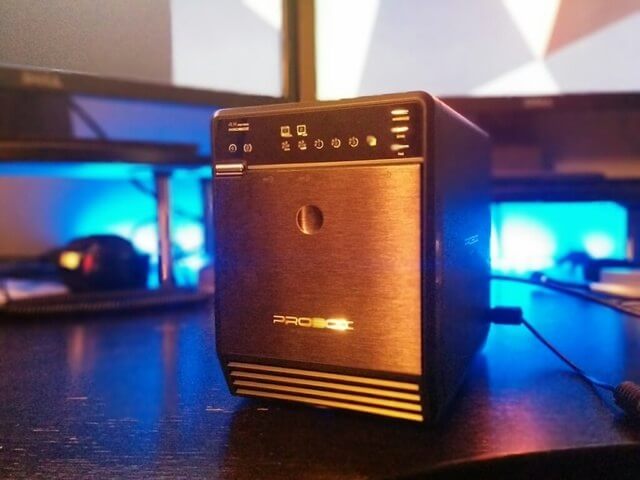Here are links to the components I used to make the HDD Array in the video above:
Amazon:
Newegg:
Today’s camera technology has advanced to the point where we can shoot 16 bit RAW video at 6K resolution and beyond. While the video quality achieved by these modern digital cinema cameras is impressive, the files they create are massive. In the early days of shooting digital video, 1TB could provide dozens of hours worth of footage. Now days, 1TB can be gobbled up in an hour of shooting or less. In order to manage all of these large files, you need to buy hard drives. When it comes to video production, external hard drives are the way to go because it’s a way to keep projects separate from your computer so you can easily move them and manage the project. There are many external hard drive options available from companies like G-Technologies, Lacie, Seagate, Western Digital, and others. However, when you look at the price you pay for what you’re getting, it’s not really the best value.
If you want to get the most for your money, then you should build your own Hard Drive Array. It’s quite simple really – just select an enclosure and HDDs to install inside. Then configure the RAID. When it comes to enclosures, I like Mediasonic. They make quality 4 bay and 8 bay enclosures in either software RAID or hardware RAID configurations. The video above demonstrates how to assemble a really nice 4 bay software RAID hard drive array for yourself to save a boatload of money! How much savings, you ask? Check out the chart below to compare for yourself (be sure to click to enlarge):

As you can gather from my chart, building your own RAID Array typically costs about half the price of the pre-built units. This is the most inexpensive way to store all of that data that your video production projects require. Aside from the cost savings benefit, I like that you have the ability to select which hard drives and enclosure to use in your array. This gives you the ability to customize whether or not you want a software RAID or hardware RAID solution, how many bays (4 or 8), as well as which I/O ports you need (depending on the enclosure). I like MediaSonic enclosures because they are well made, inexpensive, and offer both USB 3.0 and eSATA. Unfortunately, according to my research, there are no enclosures with Thunderbolt as of yet. Hopefully MediaSonic will make a Thunderbolt enclosure soon. Granted, in real world usage USB 3.0 should yield very similar read/write speeds as thunderbolt because the bottleneck occurs with the spinning disk HDD in use. Of course, if SSDs were used instead, you would see a big boost in speed with Thunderbolt vs USB 3.0, but that would be insanely expensive! However, I do like that Thunderbolt gives you the ability to daisy chain drives together. As far as speed is concerned, I’m really impressed with the RAID 0 performance. As you can see from the video (and the picture below), the write speed is 385MB/s and the read is 386MB/s. This is almost as fast as a single, non RAIDed SSD, and about 3 times faster than a single, non RAIDed HDD. Technically, these Seagate 4TB drives are not even the fastest spinning disk drives available. They are 5900rpm as opposed to the faster speed 7200rpm. Therefore, if you were to use the more expensive 7200rpm drives, I would expect speeds to be close to 500MB/s.

Technically, these Seagate 4TB drives are not even the fastest spinning disk drives available. They are 5900rpm as opposed to the faster speed 7200rpm. Therefore, if you were to use the more expensive 7200rpm drives, I would expect read and write speeds to be close to 500MB/s.

I hope this blog has been helpful and will save you money on your next RAID Array. Use the comment section below if you have any questions or any information to add to the topic of RAID Arrays. Thanks for reading!
9 Responses
As much as I love a good bargain, I would stay away from seagate drives for something like this. They have the highest failure rate of any large drive company (by a large margin). Even more so in raid 0 when you add to the potential failure points every time you add a drive. Imaging the horror when you lose 16tb of footage because ONE of the drives failed. But for a short term, cheap, and quick fix you can\\\\\\\\\\\\\\\’t beat seagate.Good job though!
Hi Andrew,
You bring up some good points. However, we always have 2 copies of everything we are working on in order to safeguard our data. Also, do you have data that supports your claim about Seagate drives having the highest fail rates? In my experience, Seagate drives always perform really well and I have not had a single drive fail on me in all of my years using them. Even the portable Seagate Backup Plus drives have been perfectly reliable for us. We have more than 20, in many varieties, and we’ve been using them for over 4 years and not one of those has failed. I really like Seagate drives. Soon, we will be installing a SAN, so all of this passing around and backing up of drives will be a thing of the past 🙂
Well, don’t know what data he has but as I write this, I have a 2TB Expansion and 3TB Expansion (the old models) and the latest 4TB model; all died the last 5 years, the most recent crash being the 4TB which I purchased Jan 2016 and died 8 months later.
Sure, this is anecdotal but a cursory search on Google, Tom’s Hardware, even Twitter for “hard drive crashed” shows an overwhelming majority of complaints for Seagate products. Something more direct, here’s a class-acton lawsuit for their 3TB HDs (the same one I mentioned failed earlier) and Backblaze stopped using Seagate’s 3TB hard drives. Back story on ExtremeTech.
I vowed to never purchase a Seagate HD ever again. The ones that are still operation, a slim 1TB and 750GB store media I can download again, mainly music. Western Digital HDs have been a champ; highly recommended. I guess you get what you pay for and price really was the only reason I chose Seagate. Their products were… are always on promotion.
Cheers!
Hi Brandon,
Great tutorial! I am new to the industry and looking to upgrade my storage space and speed, but I am wondering what you use for backup or archival? This seems like a great system for editing, but what about long term storage? You said above that you have 2 copies of everything. How do you store your backups? Thanks!
I want 20Tb hard drive external hardisk.
How many dollar is want
I am from Afghanistan
It takes about $700 to $800 dollar
In response to data about Seagate drive failure: https://www.backblaze.com/blog/wp-content/uploads/2017/05/blog-hd-stats-q1-2017-table.jpg
Brandon –
I really enjoyed your video, So much so I jokingly sent it to my 14 year to watch as in “here’s a fun film to watch”. So I purchased the Raidprobox you suggested. I purchased these drives https://www.amazon.com/gp/product/B013HNYV8I/ref=oh_aui_detailpage_o00_s00?ie=UTF8&psc=1
and I began the process using an Apple macbook pro with High Sierra. It did not work. I was able to finally partition the drives using another mac with El Capitan, But I was not successful in creating a striped raid. I then decided what If I just used the drives as individual drives, I began to but they don’t stay mounted. Every time I put content on them they unmount. I am about to return everything unless you have some sage wisdom you can share,,,,,
Thank you,
-David
How would you do this with SSD drives?